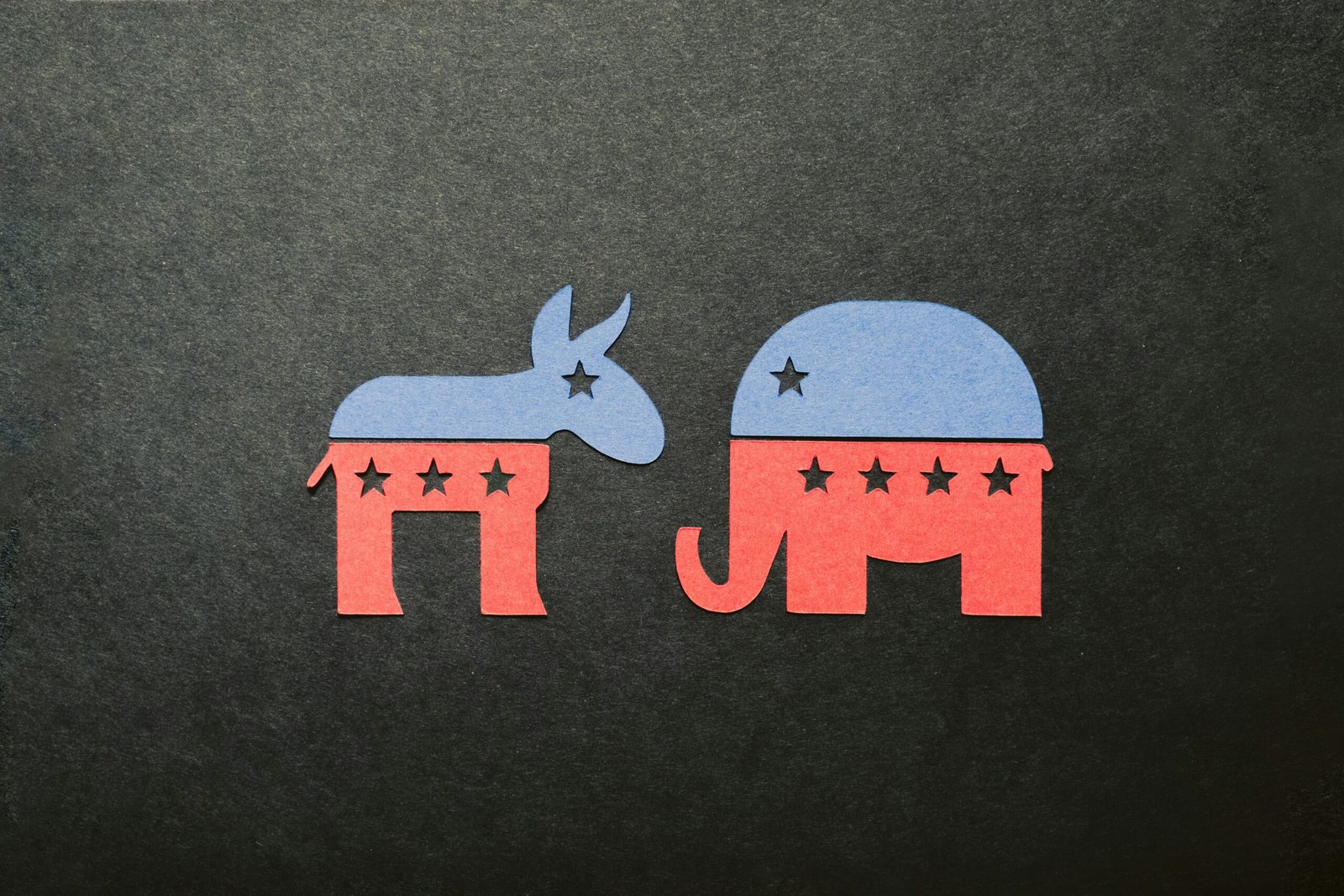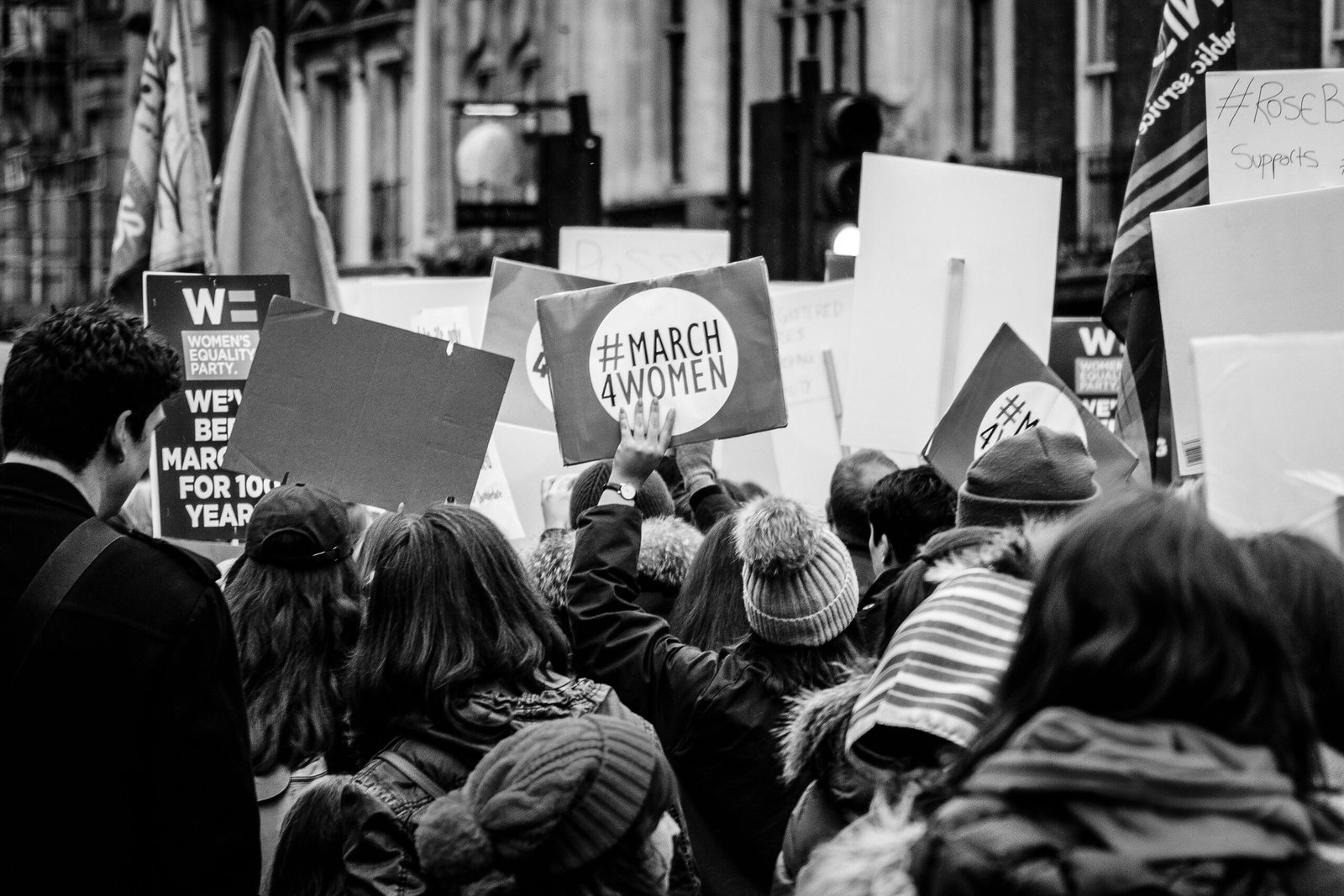
Introduction to Political Polarization
Political polarization refers to the growing ideological divide between political parties and their supporters, resulting in a decreased ability to engage in meaningful dialogue and compromise. It manifests through the stark differences in beliefs, values, and policy preferences that increasingly characterize contemporary political landscapes. As individuals align more closely with their party’s views, the space for bipartisan discourse diminishes, leading to heightened tensions and a lack of mutual understanding.
The causes of political polarization are multifaceted. One significant factor is the influence of social media and the internet, which often creates echo chambers where individuals are exposed primarily to information that reinforces their existing viewpoints. This scenario can exacerbate divisions and foster an ‘us versus them’ mentality. Additionally, demographic changes, such as urbanization and shifts in racial and educational composition, contribute to the alignment of social identities with political affiliations, further deepening existing divides.
The implications of political polarization are profound and far-reaching. Civic engagement, once a foundation of democratic society, suffers when citizens become disillusioned with the political process. Many individuals may feel that their voices are not heard or represented, which raises questions about public trust in institutions. Moreover, the inability to reach consensus on critical issues can stall legislative progress, leaving pressing societal challenges unaddressed. Political polarization creates an environment wherein cooperation among opposing parties becomes increasingly difficult, perpetuating a cycle of conflict that undermines the democratic ideals of dialogue and compromise.
In recognizing the significance of political polarization, it is essential to examine its characteristics, causes, and potential solutions to foster unity in an increasingly divided society.
Historical Context of Political Polarization
Political polarization has a deep-seated history that reflects the shifting dynamics of societal values and governance. Throughout the years, numerous pivotal events have intensified divisions among ideological factions. One prominent example is the aftermath of the Civil War in the United States, which left a profound divide between the Northern and Southern states. The Reconstruction era that followed was marked by severe contests between those advocating for civil rights and those seeking to maintain the status quo, leading to significant ideological splits that would echo through generations.
In subsequent decades, the Progressive Era in the early 20th century represented a reaction against the prevailing inequalities of the Gilded Age. Reform movements sought to address social justice issues, but these actions often polarized Americans based on class and economic interests. When the Great Depression hit, it not only exacerbated economic divides but also reshaped political allegiances, as people turned to radical solutions and increasingly partisan identities emerged.
The late 20th century presented further challenges to national unity with events such as the Vietnam War, which stirred dissent and rallying cries across political lines. Citizens aligned themselves more strictly with either anti-war sentiments or pro-war ideologies, leading to a deepening rift within society. The introduction of cable news and talk radio in the 1980s and 1990s further amplified these divisions, as partisan media outlets began catering to specific audience biases, creating echo chambers that solidified differing viewpoints and stimulated polarization.
In the 21st century, the digital revolution transformed the political landscape yet again. Social media platforms have emerged as significant players in shaping public opinion, often exacerbating divisions through algorithms that promote sensational content over nuanced discussions. These historical contexts demonstrate not only the continuation of polarization but also the evolving factors that contribute to the widening gap among ideological factions. Understanding these facets is crucial for envisioning paths toward unity in an increasingly divided world.
The Role of Media in Polarization
In contemporary society, media plays a pivotal role in shaping public perception and political discourse. The rise of both traditional media outlets, including newspapers and television, and the burgeoning landscape of social media platforms, has transformed the way individuals access and consume information. Unfortunately, these changes have also contributed significantly to political polarization. One salient factor is the phenomenon known as the “echo chamber” effect, where individuals are exposed primarily to information that aligns with their pre-existing beliefs. This creates an environment where dissenting opinions are systematically filtered out, thus reinforcing biases and preventing critical engagement with opposing perspectives.
The architecture of social media platforms further compounds this issue. Algorithms designed to optimize user engagement tend to amplify content that provokes strong emotional reactions, often prioritizing sensationalism over factual accuracy. As a result, misinformation can easily spread, leading to the establishment of narratives that may lack substantiation but resonate with specific ideological groups. Traditional media, despite facing its own challenges, also contributes to this fragmentation. News outlets may adopt particular political leanings or engagement strategies, ultimately leading their audiences to view news through a lens that aligns with their views, further entrenching divisions.
Moreover, the nature of media consumption has dramatically shifted, with many individuals now curating their news feeds. This behavior not only facilitates echo chambers but also diminishes exposure to diverse viewpoints, rendering political discourse increasingly binary. In this environment, debates become reduced to simplistic narratives, overshadowing complexities and nuanced arguments. Understanding the media’s role in political polarization is crucial for developing strategies to foster dialogue and encourage unity. By working towards a more balanced and responsible media landscape, there exists the potential to mitigate the adverse effects of polarization and promote a more informed citizenry.
Psychological Underpinnings of Polarization
Political polarization is deeply rooted in various psychological factors that significantly influence individuals’ beliefs and behaviors. One of the most prominent cognitive biases affecting this phenomenon is confirmation bias. This bias leads people to seek and interpret information in a way that confirms their pre-existing beliefs, disregarding opposing viewpoints. For instance, individuals may selectively consume news sources that align with their political ideology, further entrenching their polarized beliefs. This selective exposure exacerbates divisions as it creates echo chambers where dissenting opinions are absent.
Another psychological factor contributing to polarization is groupthink. Within group settings, individuals may prioritize consensus over critical analysis, often suppressing dissenting opinions to maintain harmony. This can foster an environment where polarized views are unchallenged, reinforcing extreme beliefs. Those who express contrasting opinions may feel social pressure to conform, leading to a lack of diverse perspectives within groups. Consequently, the phenomenon of groupthink can intensify political divides as collective identity strengthens at the expense of individual critical thinking.
Social identity theory, formulated by Henri Tajfel, further explains how individuals’ affiliations with particular social groups influence their political beliefs. People derive part of their self-concept from their group memberships, such as political parties or ideological collectives. This attachment can lead to an “in-group versus out-group” dynamic, where individuals feel compelled to defend their group’s beliefs rigorously. As a result, people may dehumanize or vilify those who belong to opposing groups, accentuating hostility and resistance towards dialogue and compromise.
By understanding these psychological underpinnings—confirmation bias, groupthink, and social identity theory—we can begin to identify strategies to mitigate political polarization. Recognizing these mechanisms is crucial in fostering a more open-minded and inclusive political discourse.
Impact on Society and Governance
The pervasive nature of political polarization holds significant implications for both governance and societal cohesion. When political factions become entrenched in their beliefs, this often leads to a breakdown in dialogue and collaboration among not only lawmakers but also constituents. As elected officials align more closely with their ideological groups, the likelihood of reaching bipartisan agreements diminishes, which in turn hampers effective policy-making. This stagnation can result in crucial issues being sidelined, as parties prioritize their political interests over the collective needs of the public.
Polarization can distort the democratic process, as voters may be less willing to compromise or engage with differing viewpoints. Consequently, elections can become battlegrounds where ideological purity is celebrated, while moderate voices are often drowned out. This shift can result in a political landscape dominated by extremes, further entrenching divisions within society. Such divisions cultivate an environment where misinformation thrives, leading to increased distrust among citizens regarding their institutions. An undermining of faith in governance can provoke not only apathy but also heightened tension within communities.
Moreover, the consequences of political polarization extend beyond mere legislative gridlock. The societal friction generated by these divisions can escalate into incidents of social unrest, as groups mobilize around competing narratives of identity and belonging. Such dissent underscores a broader challenge: reconciling divergent political views in a manner that reinforces unity without sacrificing democratic principles. Ultimately, fostering a culture of dialogue and mutual respect is imperative for mitigating the adverse effects of polarization. As societies grapple with these complexities, it becomes increasingly evident that a balanced approach to governance and community engagement is essential for moving toward a more cohesive future.
Examples of Successful Bipartisan Initiatives
Political polarization has become a pressing concern in contemporary society, yet there are notable examples of bipartisan initiatives that have successfully bridged the divide between differing political factions. These initiatives not only demonstrate the feasibility of cooperation but also provide valuable insights into the strategies that foster such collaboration.
One prominent example is the Every Student Succeeds Act (ESSA) enacted in 2015, which replaced the No Child Left Behind Act. ESSA was a result of extensive negotiations between both parties, addressing key educational issues such as standardized testing, accountability measures, and state flexibility. By focusing on shared goals—improving educational outcomes for students—this legislative effort garnered support from diverse groups, showing that bipartisan cooperation can yield significant progress in education reform.
Another successful case study is the First Step Act, signed into law in 2018, aiming to reform the criminal justice system. The legislation, which emphasizes rehabilitation over incarceration, received support from both political parties, reflecting a broader consensus on the need for reform. The First Step Act serves as a pivotal example of how centrist policy objectives can unite typically polarized factions, providing a framework for future bipartisan efforts in addressing complex social issues.
Moreover, the recently launched Climate Solutions Caucus in Congress provides a contemporary illustration of bipartisan collaboration. Members from both major parties come together to discuss and promote policies addressing climate change, emphasizing the importance of finding common ground in tackling global challenges. This initiative highlights the necessity of collaborative approaches in fostering dialogue rather than division, underscoring that bipartisan efforts can lead to innovative solutions.
These examples illustrate that successful bipartisan initiatives rely on shared objectives, collective problem-solving, and a commitment to engage in productive discourse. By examining the strategies utilized in these cases, policymakers can better navigate the political landscape to reduce polarization and develop future initiatives that prioritize unity and collaborative governance.
Strategies to Promote Civic Engagement and Dialogue
Promoting civic engagement and open dialogue is vital in addressing political polarization and fostering a more unified society. One effective strategy is to create community forums where individuals from diverse political backgrounds can come together to discuss current issues openly and respectfully. These forums provide a safe space for participants to express their views while also encouraging active listening. Facilitators, trained in mediation, can guide conversations to ensure that all voices are heard and respected, fostering a sense of community and shared purpose.
Education plays a critical role in enhancing civic engagement. Initiatives that focus on civic education in schools and community centers help to empower individuals with the knowledge necessary to engage in political discourse meaningfully. Workshops that inform community members about the political process and their voting rights can increase participation in democratic processes. Furthermore, these educational programs should emphasize the importance of understanding different perspectives, promoting empathy and respect among participants, regardless of their political affiliations.
Encouraging respectful communication both online and offline is equally essential. Social media campaigns that advocate for constructive dialogue and discourage hostile interactions can significantly reduce tensions in political discussions. Promoting the use of etiquette guides for online discourse can also help individuals navigate challenging conversations more effectively. When individuals learn to communicate with civility, they are more likely to seek common ground rather than perpetuate conflict.
Additionally, community-building initiatives, such as local service projects or shared cultural events, can bring together individuals from different political ideologies, creating opportunities for collaboration. Working towards a common goal enables people to bond over shared experiences rather than divisive beliefs. Such initiatives reinforce the concept that collaboration transcends partisan conflicts, reminding citizens of their shared humanity and collective responsibility.
The Role of Education in Combating Polarization
Education has long been recognized as a cornerstone of societal progress and cohesion. In the realm of political polarization, it serves as a powerful tool to bridge divides and foster understanding among diverse groups. A key aspect of education aimed at combating polarization lies in the development of critical thinking skills. By encouraging students to analyze various viewpoints and engage in reasoned discourse, educational institutions can empower them to navigate the complexities of modern political landscapes effectively.
Furthermore, the integration of inclusive curricula is essential in this endeavor. By incorporating a wide array of perspectives and narratives into the educational program, schools can reflect the diversity of the society they serve. This approach not only enhances academic engagement but also fosters a sense of belonging among students from different backgrounds. An inclusive curriculum challenges stereotypes and equips learners with a broader worldview, enabling them to understand and appreciate differing political ideologies.
Additionally, programs designed to promote empathy and understanding play a substantial role in reducing polarization. Initiatives such as conflict resolution workshops, community service projects, and dialogue circles encourage students to connect with others and cultivate relationships based on mutual respect. These experiences are critical as they allow individuals to learn from one another, breaking down barriers of misunderstanding and preconceived notions. Engaging in such interactive activities can facilitate a more harmonious discourse, even amidst differing opinions.
As educators focus on creating an environment that values critical thinking, inclusivity, and empathy, they contribute to a culture that prioritizes dialogue over division. The cumulative effect of these educational strategies can significantly alleviate political polarization, fostering a generation that values unity and collaboration while respecting a multitude of perspectives. Ultimately, comprehensive educational reform can be a transformative approach toward creating a more understanding and politically engaged society.
Hope for the Future: Vision of a Unified Society
The prospect of a unified society is not merely a distant dream; it is a tangible goal that can be achieved through collective efforts and visionary leadership. As we navigate the complexities of contemporary political polarization, it becomes essential to recognize the potential held by upcoming generations. These younger individuals, often characterized by their progressive viewpoints and strong sense of community, carry forward the aspirations for a more inclusive and cohesive society. They are not only leveraging technology to bridge gaps but also challenging traditional narratives that perpetuate division.
Moreover, evolving public attitudes play a crucial role in this transformative journey. The increasing recognition of shared human experiences across political lines forms a foundation on which a more unified society can be built. Civic engagement initiatives, education reform, and community-building activities foster dialogue and understanding, gradually dismantling the walls erected by political polarization. Such initiatives can help elucidate that while political differences exist, mutual respect and empathy remain fundamental to a thriving democracy.
Possible pathways to achieving unity lie in collaborative efforts that bring together diverse groups to discuss common concerns. Initiatives aimed at bipartisan cooperation can create space for productive conversations, allowing individuals from differing backgrounds to find shared values and goals. Programs promoting active listening, critical thinking, and constructive debate can empower citizens to engage in meaningful discussions, leading to a decrease in divisiveness.
Ultimately, the vision of a unified society rests on an unwavering commitment to optimism and collaboration. While the journey may be fraught with challenges, the dedication to fostering connections and understanding across political spectrums can transform the fabric of our communities. By investing in dialogue and prioritizing cooperation, we can lay the groundwork for a future characterized by unity and collective progress.



